

Profit
PM CALLS FOR SWIFT ACTION TO BRING AN END TO PALESTINIAN GENOCIDE

RIYADH
A G E N C I E S
R I M E Minister Shehbaz
PSharif delivered a speech to the Arab-Islamic Summit on Monday, denouncing Israeli aggression in Gaza, Lebanon, and Iran and reiterating Pakistan’s “unwavering support” for the people of Palestine
Arab and Muslim leaders have gathered in Saudi Arabia on Monday for a summit addressing the conflicts in Gaza and Lebanon, a chance to send a message to US president-elect Donald Trump
PM Shehbaz, who left for Riyadh on Sunday addressed the summit and pointed out the rapidly deteriorating situation in Gaza
The humanitarian crisis in Gaza has reached a level beyond imagination, he said For over one year, the occupied
Palestinian territories, especially Gaza, have fallen in endless darkness and despair with devastated homes lives lost and families torn apart
These atrocities committed against the Palestinians have rightfully been labelled as genocide, not only by the media but the International Court of Justice,” the prime minister added “With each passing day every moral code is flagrantly violated by Israel yet the killing and destruction continue with no end in sight I ask how long will this annihilation be ignored?
PM Shehbaz then noted that Israel has become emboldened by the “world’s indifference and inaction ” lamenting that calls for a ceasefire and unimpeded humanitarian relief have fallen on deaf ears
The most sophisticated weapons continue to be supplied to Israel Indeed, it has been assured of unconditional as-
the Supreme Court, Justice Mansoor Ali Shah, has questioned the constitutionality of the existing benches until designated constitutional ones are formed “Until a constitutional bench is established are we unconstitutional? Justice Mansoor asked during the hearing of a tax-related case in the apex court on Monday The case was being heard by a three-member bench, which also included Justices Ayesha Malik and Aqeel Abbasi His comments come after the ruling coalition pushed through the 26th Amendment in both the National Assembly and the Senate last month This amendment includes provisions for the establishment of designated constitutional benches at the Supreme Court and high courts The controversial constitutional changes have sparked confusion regarding the future of pending cases and the jurisdiction of the benches hearing them During the hearing Justice Ayesha pointed out that the bench led by Justice Mansoor was an ordinary one and the case should ideally be heard by a constitutional bench In response, Justice Mansoor remarked, At present, there is no constitutional bench, so what should be done with this ‘unconstitutional bench’?” He further questioned whether constitutional cases should remain on hold until the designated benches are formed stating that even if they proceeded with the case no one could challenge their decisions Even if we decide the case what will happen? Who is going to stop us? [ ] The review will also come to us, and then we can affirm our jurisdiction,” he said, adding that the debate over whether a case should be heard by a regular or constitutional bench had been raised multiple times
Home Minister Sindh Mr Ziaul Hassan Lanjar announced on Monday that four suspects including the mastermind behind the suicide bombing near Karachi airport that targeted a convoy of Chinese engineers, have been arrested Speaking at a press conference in Karachi alongside Sindh Inspector General of Police Ghulam Nabi Memon Minister Lanjar provided details of the arrests of suspects involved in the attack Javed alias Sami, who is the mastermind of the [airport] attack, and the woman facilitator Gul Nisa were arrested from RCD highway [which connects Karachi to Quetta] ” the provincial minister said while addressing the press conference

sistance and protection ” he said
“International humanitarian laws meant to protect the vulnerable have been torn to shreds PM Shehbaz said Humanity is being tested and failing Is it any wonder then that after decades of suffering and oppression, the spirit of resistance remains unbridled?”
The prime minister reiterated Pakistan s commitment and unwavering support to establish an independent viable and contiguous State of Palestine with Al-Quds Sharif (Jerusalem) as its capital, based on the pre-1967 borders ” He
stated that Palestinian self-determination is “the only avenue towards justice and durable peace in the Holy Land
The PM also condemned Israeli military action in Iran and Lebanon, warning: Such escalations constitute a dangerous threat that could unleash a broader war ” “As the Ummah we are bound by duty by faith and by our conscience to stand resolutely with the people of Palestine more than ever before, Shehbaz said We must not let this systematic genocide and aggression persist ”
Pakistan s fallen soldiers upon his arrival at the General Headquarters (GHQ) He was received with a guard of honour by a Pakistan Army contingent The visit marks a commitment to expanding security ties between Australia and Pakistan focusing on mutual interest areas in defence and counterterrorism C h i e f o f A
Pakistan s counterter-
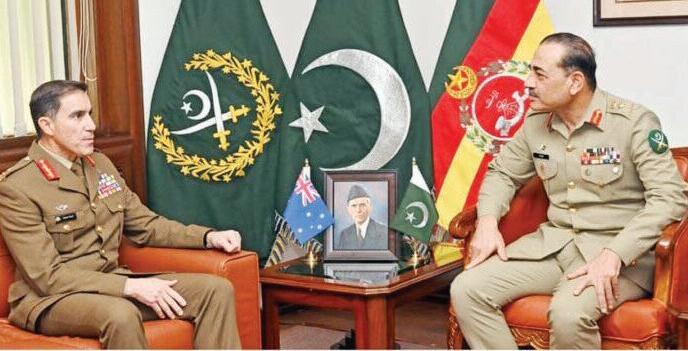
rorism efforts and expressed his commitment to deepening bilateral defence and security cooperation Both sides reiterated their resolve to enhance collaboration to support regional and global peace efforts Earlier Lieutenant General Stuart laid a floral wreath at the Yadgare-Shuhada a memorial for
China vows to thwar t all effor ts to ‘sabotage relations with Pakistan
He confirmed that two Chinese engineers were among the three people killed in the bombing, while 11 others were injured The attack was claimed by the Baloch Liberation Army (BLA) an outlawed separatist group Lanjar identified the suicide bomber as Shah Fahad whose body was largely destroyed in the explosion
“CCTV footage helped identify the bomber and two of his accomplices Fragments of the vehicle used in the attack were also recovered from the scene he added
He pointed out that the investigation revealed Javed s direct involvement in the suicide bombing, while Gul Nisa had facilitated him
He said that the investigators recovered the chassis number and registration plate, which belonged to a double-cabin vehicle from the spot
The home minister added that the vehicle used in the attack was purchased for Rs7 1 million from a showroom in Karachi and transferred under the suicide bomber s name “The payment was transferred through a private bank in Hub Balochistan ”
he added Lanjar further said that the suicide bomber, Shah Fahad, was identified through his fingerprints “since his face and much of his torso were burnt during the explosion
Citing further investigation he said that the suicide bomber had arrived in Karachi in the same vehicle along with a woman on Oct 4, and stayed at a local hotel in Saddar
During the night of the attack, the minister said Javed who was inside the airport alerted the attacker via phone when the Chinese convoy exited the airport As the Chinese convoy reached a short distance from the airport, the suicide attacker

SOL AR SURGE SL ASHES DISCOS REVENUES AS GRID DEMAND DIPS

TGov t nears deal with 18 IPPs to shift to ‘take and pay’ model: repor t
New agreement with Independent Power Producers expec ted to be signed within t wo weeks will cut annual capacit y payments by up to Rs 100 billion and streamline energy costs

both consumers and manufacturers anticipate further growth with declining interest rates Additionally, the introduction of new models, including Hybrid Electric Vehicles (HEVs) and fully electric vehicles (EVs), is expected to further drive market momentum in the coming months Among the key players Sazgar Engineering (SAZEW) recorded the most



TPSX surges, KSE-100 index hits record 94,000 mark

macroeconomic indicators is expected to make equity investments more attractive with the market currently trading at a P/E of 4 2x and a dividend yield of 11 0% These factors, along with reduced external financing needs under the IMF program are likely to sustain foreign investor interest However a modest economic recovery may limit potential gains for
Pak istan’s IT expor ts surge with 25% growth, eyes $25b
ISLAMABAD M o n to r i n g D e s k Pakistan’s Information and Communications Technology (ICT) exports have experienced an impressive 25% growth with the government setting its sights on reaching the $25 billion mark This update was shared by Shaza Fatima Khawaja, the Minister of State for IT and Telecommunication, during her address at the inaugural Pak-US Tech Investment Conference 2024, delivered via video link Minister Khawaja emphasized that the conference is a pivotal moment for Pakistan s IT sector designed to foster collaboration between U S and Pakistani businesses with a shared interest in advancing the future of technological innovation “Pakistan’s tech ecosystem has shown remarkable growth over the last few years propelled by a thriving environment of entrepreneurship innovation and strong governmental support she stated The Pak-US Tech Investment Conference is a significant step in advancing our goals, providing a platform for further collaboration between both nations’ businesses ” On the subject of cybersecurity, Minister Khawaja outlined the country’s substantial strides in ensuring a secure digital environment Pakistan s efforts were recently recognized globally

as the country was ranked Tier-1 (Role-Modeling) in the Global Cybersecurity Index by the International Telecommunication Union (ITU), alongside global leaders like the United States and Japan This achievement highlights Pakistan’s growing capabilities in cybersecurity, bolstered by initiatives such as the National Cyber Security Policy CERT rules and the development of a comprehensive Cyber Security Regulations framework In terms of e-governance Pakistan also saw significant progress, moving up 14 positions in the United Nations E-Government Development Index (EGDI) from 2022, now proudly ranking in the High EGDI category
The Minister further highlighted the strong demand for Pakistani IT services with over 60% of the country s IT and IT-enabled services (ITeS) exports going to the U S and the U K This, she noted, is a testament to the quality and competitiveness of the work produced by Pakistan’s tech enterprises and freelancers
“The government is committed to nurturing our IT sector and fostering a digital ecosystem that promotes innovation and entrepreneurship she said We are on a clear path toward National Digitization supported by the formation of a National Digital Commission and the Pakistan Digital Authority, which will soon be legislated ”


COMMENT
lated its actions with a stated objective of dismantling

e u d a l i s m 2 . 0



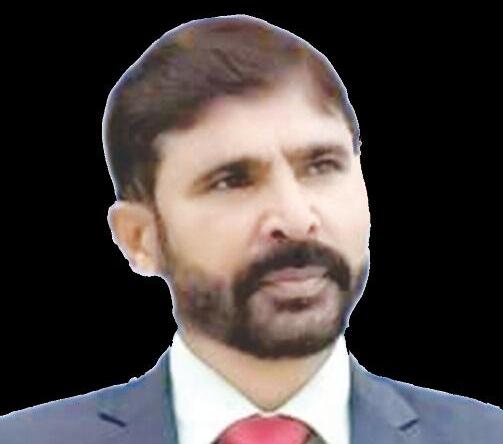
D r M u h a M M a D a k r a M Z a h e e r
f you must wound someone it is better to kill him The statement reflects a powerful notion regarding the nature of conflict, especially in its suggestion that merely wounding an enemy whether in or military contexts often fails to resolve tensions and may even escalate them In this perspective it implies that if one must strike the strike should be decisive enough to prevent retaliation or a prolonged cycle of conflict While the idea may sound ruthless, it offers insight into why conflicts, especially at national and global levels, often spiral when left unresolved, leading to deeper, more damaging confrontations The principle discussed in the missive reveals a fundamental truth about cycles of revenge and violence especially relevant to historical and modern warfare In an historical example Japan s attack on Pearl Harbor was a significant strike but not one that incapacitated the United States Rather, it galvanized the U S response, ultimately leading to devastating attacks on Japan Here, the "decisive strike" concept emerged: the U S did not aim to merely retaliate but to neutralize Japan s ability to wage war The use of atomic bombs while morally contentious exemplified this approach by compelling Japan s surrender, a controversial move but one that ended years of bloody conflict and paved the way for Japan's reconstruction as an ally Though brutal the tactic also reflects the argument that decisively ending conflict can spare prolonged suffering and loss on both sides as compared to an ongoing cycle of lesser strikes In this light, the statement seems to support the idea that decisive, if extreme, measures can bring an end to conflict in a way that prolonged, lesser actions cannot This logic suggests that decisive actions may sometimes be employed to end a standoff and lay a foundation for future stability A military or political conflict marked by an ongoing cycle of wounding but non-terminal blows can spiral out of control causing even more suffering without resolution The adversaries, rather than seeking peace, instead prepare for the next exchange, potentially becoming locked in a perpetual cycle of vengeance and escalation each side motivated by a desire to right perceived wrongs This concept resonates starkly within modern conflicts such as the one between Hamas and Israel The October 7 attack by Hamas against Israel, for example, inflicted damage and loss but was not a blow that disabled Israel’s capacity to respond Israel, perceiving the strike as a critical threat, has since esca-
Hamas s ability to launch further attacks From Israel s perspective, leaving Hamas weakened but still capable could mean leaving an adversary who would likely retaliate Thus Israel’s strategy appears driven by a belief that completely neutralizing the threat is the only way to achieve lasting security a strategic if morally ambiguous pursuit of finality rather than a cycle of tit-for-tat aggression However, while the principle can be seen as compelling in explaining these actions, it is morally fraught The approach described in the missive risks endorsing an overly aggressive stance that might overlook the complex motivations of adversaries or the long-term impacts on civilians and regional stability Many conflicts are not simply matters of neutralizing an enemy but involve complex political, historical, and cultural grievances In a world interconnected by global relationships and bound by humanitarian norms, the idea of dealing a "final blow" can have broader repercussions potentially breeding long-standing resentment fostering more opposition and causing immeasurable civilian suffering Ending a conflict by attempting to eliminate a perceived threat might succeed in the short term, but it can also backfire, creating a new generation of adversaries motivated by the losses they endured Furthermore, this approach does not consider scenarios where mutual respect and diplomacy might resolve underlying issues more effectively than violent measures A purely militaristic view might dismiss the idea that former adversaries can become partners or that long-standing tensions can evolve into peaceful relationships Decades after World War II, Japan became a close ally of the United States, a transformation not brought about solely by force but by subsequent efforts toward reconciliation mutual respect and economic partnerships This perspective suggests that while decisive actions may conclude one phase of a conflict, they do not ensure sustainable peace; true peace often requires addressing the grievances, histories, and needs of those involved Reflecting on global dynamics today it’s evident that many international strategies continue to be shaped by similar ideas of preemption and deterrence States might choose decisive action over incremental wounding fearing that a perceived

“half-measure” would invite further escalation This approach, however, remains ethically complex While some leaders and strategists may find it pragmatic to seek finality they must also weigh the humanitarian costs and moral Considerations particularly in an age where public opinion, international scrutiny, and diplomatic relationships profoundly
t t h e i d e a t h a t d e c i s i v e , i f e x t r e m e , m e a s u r e s c a n b r i n g a n e n d t o c o n f l i c t
i n a w a y t h a t p r o l o n g e d , l e s s e r a c t i o n s c a n n o t T h i s l o g i c
s u g g e s t s t h a t d e c i s i v e a c t i o n s m a y s o m e t i m e s b e e m p l o y e d t o e n d a s t a n d o f f a n d l a y a f o u n d a t i o n f o r f u t u r e s t a b i l i t y

silence
At the height of feudalism, a select few dictated the socio-political and economic conditions of entire regions Today you have such giants as Amazon, Google, and Meta, and all of them have similar power relations

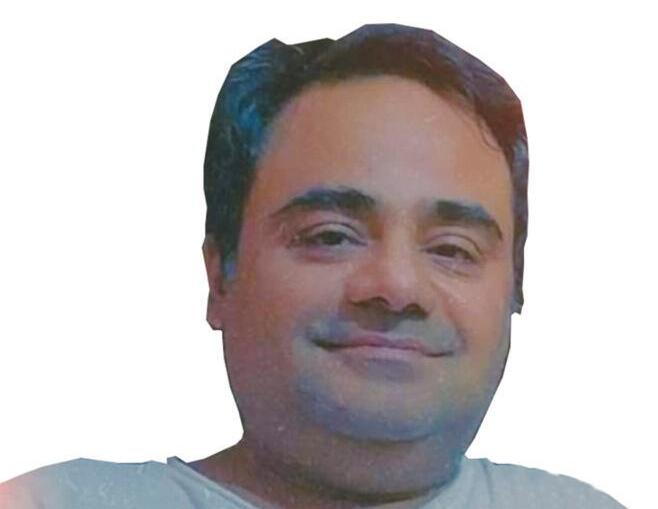
crossroads in the fight against climate change 2024 is on track to be the hottest year on record surpassing even the devastating heatwaves of the previous year The stakes have never been higher, and the urgency for decisive action has never been more apparent Yet as the planet continues to heat up the response from the
The High Stakes of COP29 in a Warming World
The stakes have never been higher, and the urgency for decisive action has never been more apparent Yet, as the planet continues to heat up, the response from the world’s wealthier nations remains disappointingly lukewarm Vulnerable countries, like Pakistan, are left to bear the brunt of a crisis they did not create, while the promises and commitments made at previous climate summits remain largely unfulfilled. COP29 presents a pivotal moment will it be the turning point that leads to real, lasting change, or yet another missed opportunity to avert further catastrophe?
vulnerable nations for the irreversible impacts they are already facing These meagre contributions are not just disappointing; they reflect a deeper issue of broken promises and misplaced priorities by the global north Senator Sherry Rehman s recent call for Internationally Determined Contributions from developed nations, demanding a shift from voluntary pledges to binding financial commitments is a proposal that deserves serious consideration at this year s summit The fact that developed countries have been historically responsible for the lion s share of greenhouse gas emissions means they have a moral obligation to assist those who are bearing the brunt of the climate crisis But instead the focus remains on short-term national interests particularly energy security as evidenced by the continued expansion of fossil fuel projects even amidst growing calls for a transition to renewable energy As temperatures soar, the effects of climate change are becoming alarmingly evident From the unprecedented smog blanketing Punjab to the deadly floods and droughts affecting various parts of the world, there is no shortage of evidence that we are running out of time Yet, the discussions at COP29 risk being another exercise in diplomatic posturing unless countries are willing to move beyond rhetoric to real actionable commitments The proposed creation of a new climate finance goal that surpasses the $100 billion target is a step in the right direction, but it must come with clear timelines, accountability mechanisms, and a shift towards grants rather than loans that further burden already debtstricken nations Azerbaijan s initiative to establish a $1 billion Climate Finance Action Fund aimed at supporting disaster response and community resilience, is a commendable move that sets a precedent for other fossil fuel-rich nations However, the success of such funds depends on whether they are followed by genuine investments rather than symbolic gestures The upcoming discussions on climate finance particularly the push for grants and concessional funding,
G overnments push for
teen social media bans
Part of the reason for so much debate is that experiments that have people reducing their social media use produce varied results
AS governments worldwide move to restrict teenagers access to smartphones and social media, a fierce scientific debate has erupted over whether these digital technologies actually harm young people’s mental health The controversy, sparked by an influential recent book blaming phones for rising youth anxiety has exposed deep uncertainties in the research evidence – even as policymakers from the US state of Arkansas to Australia forge ahead with sweeping bans and restrictions CONTROVERSY TIMELINE
In March, New York University social psychologist Jonathan Haidt published a popular science book called The Anxious Generation This blames a rise in youth mental illness over the past 15 years or so on the advent of smartphones and social media One early review of Dr Haidt s book by Duke University psychological scientist Candice Odgers, published in Nature, voiced a common criticism among expert readers: While social media is sometimes associated with bad outcomes, we don’t know if it causes those bad outcomes
In April Dr Haidt responded that some recent experimental studies where researchers got people to reduce their social media use showed a benefit
In May, Stetson University psychologist Christopher Ferguson published a meta-analysis of dozens of social media experiments and found, overall, that reducing social media use had no impact on mental health Next in August Dr Haidt and his colleague Zach Rausch published a blog post arguing that Dr Ferguson s methods were flawed They said doing the meta-analysis in a different way showed social media really did affect mental health
Not long afterwards, one of us (Matthew B Jane) published his own blog post pointing out issues in Dr Ferguson’s original meta-analysis but showing Dr Haidt and Dr Rausch s re-analysis was also faulty This post also argued that properly re-analysing Dr Ferguson s meta-analysis still did not provide any convincing evidence that social media affects mental health
In response to Mr Jane, Dr Haidt and Dr Rausch revised their own post In September and October, they came back with two further posts pointing out more serious errors in Dr Ferguson s work Mr Jane agreed with the errors Dr Haidt and Dr Rausch found and has set out to reconstruct Dr Ferguson s database (and analyses) from scratch The discussion and further work is still ongoing Yet another team has recently published an analysis (as a pre-print, which has not been independently verified by other experts) disagreeing with Dr Ferguson using similarly unreliable methods as Dr Haidt and Dr Rausch s first blog post EVIDENCE IS VARIED BUT NOT VERY STRONG
Why so much debate? Part of the reason is that experiments where
duce their use of the social media platform for two weeks, and others continue using it normally The participants then had to self-report their mental health and life satisfaction
People who were asked to use Facebook less did report spending less time on the platform However there was no detectable impact on depression smoking behaviour or life satisfaction at any time point between the two groups There was a difference in self-reported physical activity, but it was very small
Another famous study recruited 143 undergraduate students and then randomly assigned them to either limit their Facebook Snapchat and Instagram use to 10 minutes per day for a month or to make no changes The researchers then asked participants to report their anxiety, depression, self-esteem, autonomy, loneliness, fear of missing out and social support At the end of the month there was no difference between the two groups on most measures of mental health and well-being Those who reduced social media use showed a small decrease in self-reported loneliness, and there was also a small improvement in depression scores among people who reported high levels of depression to begin with Studies like these address narrow, specific questions They are simply unable to answer the big question of whether long-term reduction in social media use benefits mental health For one thing they look at specific platforms rather than overall social media use For another, most experiments do not really define social media Facebook is obviously social media, but what about messaging services such as WhatsApp, or even Nintendo’s online gaming platform?
In addition few if any of these studies involve interventions or outcomes that can be measured objectively They consist of asking people – often undergraduate students – to reduce their social media use, and then asking them how they feel This creates a range of obvious biases, not least because people may report feeling differently based on whether they were asked to make changes in their life or not In a medical study assessing a drug s effect on mental health it is common to administer a placebo –a substitute that should not have any biological effect on the participant Placebos are a powerful way to mitigate bias because they ensure the participant does not know if they actually received the drug or not For social media reduction studies placebos are virtually impossible You cannot trick a participant into thinking they are reducing social media when they are not What s more these studies all work at the level of changes to the behaviour of an individual But social media is fundamentally social If one college class uses Instagram less, it may have no impact on their mental health even if the platform is bad, because everyone around them is still using it as much as ever
Finally none of the studies looked at teenagers At present there is simply no reliable evidence that getting teenagers to use social media less has an impact on their mental health Which brings us back to the fundamental question: Does reducing social media improve teen mental health? With the current evidence, we don’t think there’s any way to know
Gideon Meyerowitz-Katz an epidemiologist is senior research fellow at the University of Wollongong in Australia and Matthew B Jane is a PhD student in quantitative psychology at the University of Connecticut, in the US

are crucial if we are to prevent a scenario where developing countries are left to fend for themselves against the impacts of a warming planet One cannot overlook the stark irony of wealthy nations making lofty pledges while simultaneously failing to meet their own emission reduction targets The United States, under the Biden administration, rejoined the Paris Agreement, yet its climate policies remain marred by contradictions, especially in the wake of the US election where climate scepticism has regained ground Europe too while positioning itself as a leader in climate action is grappling with its own energy crisis
Why have Indian historians failed to combat ‘ WhatsApp histor y ’?
While Dalrymple’s criticism of India’s historians created a controversy, what is uncontested is the rise of “WhatsApp history” One of the starkest cultural consequences of the mass accessibility of the internet in India is the proliferation of fake history


HISTORIAN William Dalrymple caused a flutter last week by appearing to blame Indian historians for the rise of what he called WhatsApp history in India – fake narratives masquerading as history that are often spread to push political narratives, especially Hindutva
“My personal bugbear is that the study of history in academia entered a long phase from about the ’50s through to the beginning of the present century where academics only talked to themselves and often did so in deliberately obscure language of the Subaltern Studies Collective and so on he said As a result, you ve got the growth of WhatsApp history and WhatsApp University ’ It was the failure of Indian academics to reach out to general audiences ”
While Dalrymple’s criticism of India’s historians created a controversy what is uncontested is the rise of WhatsApp history One of the starkest cultural consequences of the mass accessibility of the internet in India is the proliferation of fake history
Much of this has been crucial to the rise of Hindutva Dalrymple notes that this pseudo history has seduced many into believing that plastic surgery existed in ancient India that the Mahabharata contains references to atomic bombs and the Ramayana to sky vehicles like helicopters
But much more politically relevant is the portrayal of the Muslim kings and emperors of mediaeval India as tyrants who, though a small minority, were engaged in constant religious warfare with the country’s vast Hindu majority
Dalrymple is not entirely wrong for identifying the failure of Indian academics to reach out to general audiences Part of the reason WhatsApp history has been so successful is that well-researched academic history has never been well disseminated It
was
Accessing this for
if not
register in
its
of
Besides
so
appeal is
of
by
a
of
is
However, what Dalrymple perhaps misses is that
blaming historians is unfair The rise of WhatsApp history is a mass phenomenon propelled by powerful political social and technological forces There is a reason for example that this did not happen in the Nehruvian era: clearly the politics of the age did not favour this sort of fake history, preferring research-backed academic


AT LEAST 40 PALESTINIANS KILLED IN ISRAELI STRIKES IN GA Z A , MEDICS SAY


Cour t proceedings begin for accused in Kolkata
China continues to advocate for
ting aside disputes and pursuing joint development to achieve mutual benefits, Foreign Ministry spokesperson Lin
stated on Monday addressing a question about joint maritime development between China and Indonesia in waters with overlapping claims During a press briefing on Monday, Lin was asked to comment on the joint statement signed between China and Indonesia on advancing the comprehensive strategic partnership and the China-Indonesia community with a shared future in which the two sides reached important

understanding on joint development in areas of overlapping claims and agreed to establish an Inter-Governmental Joint Steering Committee to explore and advance relevant cooperation In response Lin said that China has consistently advocated for setting aside disputes and pursuing joint development, aiming to work with neighboring maritime countries to manage disputes, promote cooperation, ensure stability, and achieve win-win China is willing to work together with Indonesia to implement the leaders consensus aiming for cooperative benefits to reach both nations and their people swiftly, Lin said Meanwhile, China is willing to actively explore maritime cooperation including joint development
with other neighboring maritime countries, Lin added Regarding the specific contents of the joint statement, Lin said that the joint statement clarifies the political consensus and direction for joint development in regard to conducting joint development and cooperation in waters of overlapping claims by the two countries The two countries will further explore specific issues like cooperation content and methods Lin added



CORPORATE CORNER

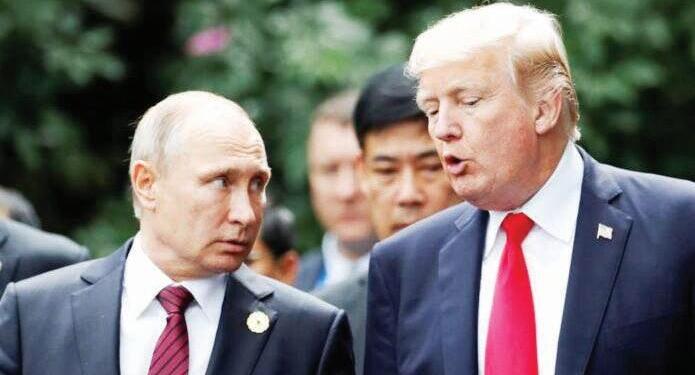


Line, the Danish shipping giant in a key meeting ahead of the visit of the Danish Foreign Minister to Pakistan During the meeting Minister Shaikh emphasized Pakistan s readiness to collaborate with Maersk Line, which has committed to a landmark investment of USD 2 billion in the country s maritime sector The Minister described this investment as a significant achievement for Pakistan s shipping and logistics industry underscoring the potential for long-term economic benefits from enhanced cooperation The officials of Maersk Line show full confidence on Government of Pakistan and Ministry of Maritime Affairs They said that they are satisfied before this major breakthrough of investment Minister Shaikh reassured Maersk officials of the Ministry of Maritime Affairs’ full support in facilitating their operations and addressing any challenges that may arise We are fully prepared to work with Maersk Line and ensure a smooth and efficient process for their investment the Minister stated He further added that the terms and conditions of the partnership were being finalized, and that today’s meeting was invaluable in establishing a clear understanding between the two parties ahead of a formal agreement The Minister expressed optimism that this collaboration would pave the way for further foreign investment and contribute to the growth of Pakistan’s maritime infrastructure

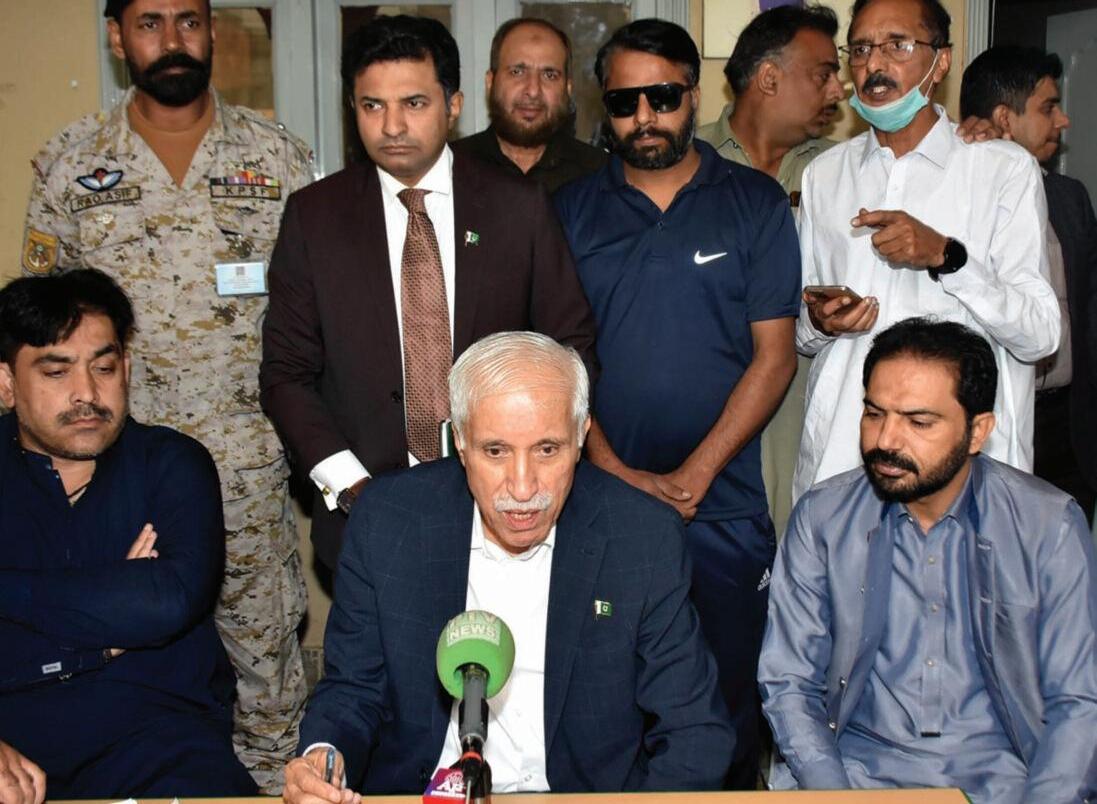
In concluding the discussion Minister Shaikh reiterated the government s commitment to addressing any issues that may emerge, ensuring that the Maersk investment would be fully supported and encouraged This partnership with Maersk Line is expected to generate numerous opportunities in port development job creation and overall economic growth, further solidifying Pakistan s position as a key player in the global shipping industry

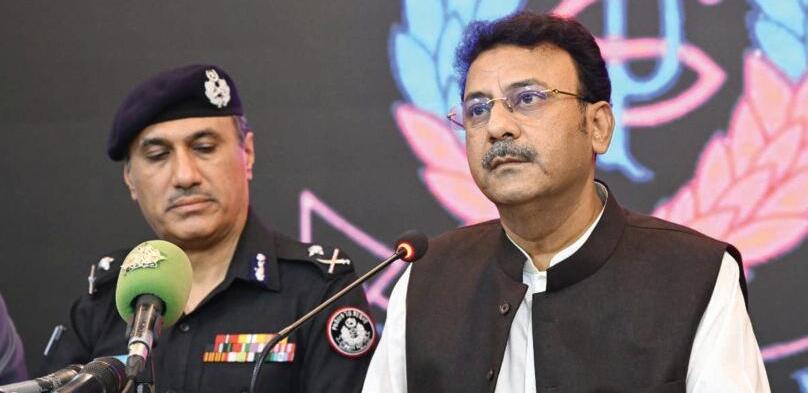

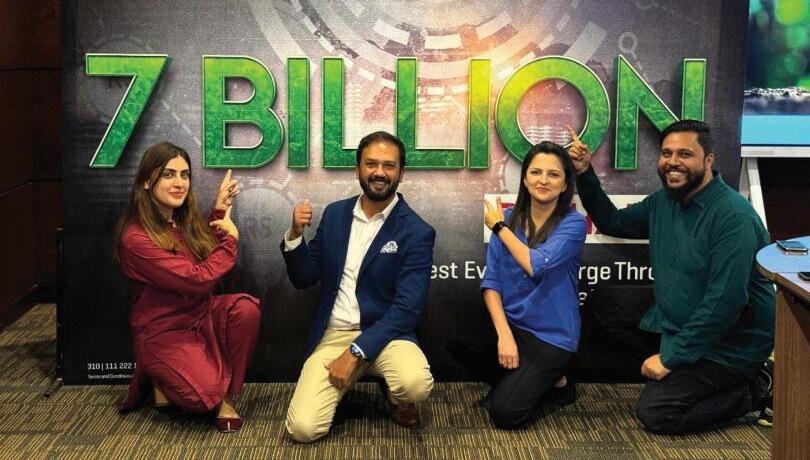




TA B LO C KS U N R E G I S T E R E D V P N S A M I D G R O W I N G R E S T R I C T I O N S

UNICEF calls for urgent ac tion to combat air pollution threatening children in Punjab
ISLAMABAD
The United Nations Children’s Fund (UNICEF) Representative in Pakistan Abdullah Fadil on Monday called for urgent and greater efforts to tackle air pollution highlighting the alarming exposure of over 11 million children under the age of five to smog in the most affected districts of Punjab Air quality in the province was declared a calamity last month
To protect children from pollution schools in major cities across Punjab have been closed until November 17 Public parks, zoos, playgrounds, and museums have also been off-limits to the public until the same date to reduce exposure to the hazardous air
The Air Quality Index (AQI) for seven cities in Punjab was reported above 400 on Monday, with Sialkot reaching a dangerously high reading of 774 An AQI above 300 is considered “hazardous” to health
In a statement issued from Islamabad, UNICEF revealed that air pollution levels had reached record highs in Lahore and Multan last week prompting the hospitalization of several people including dozens of children The air pollution is so severe that it is now visible from space, the statement said, citing a BBC report
“I am deeply concerned about the health and well-being of young children who are forced to breathe in toxic polluted air
Fadil stated Over 11 million children under five years old are being exposed to smog in the most affected districts
Fadil also pointed out that prior to these extreme pollution levels, around 12% of deaths among children under five in Pakistan were attributed to air pollution He warned that the impact of the current smog would likely be devastating
Doubling or tripling pollution levels in the air will have serious, long-term consequences especially for children and pregnant
women, he said
Fadil explained that young children are particularly vulnerable to air pollution due to their smaller lungs and developing immune systems
Air pollution can severely impact babies developing lungs and brains potentially damaging brain tissue and impairing cognitive development with lifelong effects, he noted He also stressed that exposure to polluted air during pregnancy increases the risk of premature birth respiratory problems and low birth weight in babies
The closure of schools in Punjab, affecting nearly 16 million children, has disrupted their learning In response, the government has shifted to online education until November 17
Fadil urged the government to ensure every child s right to clean air emphasizing that measures to reduce emissions from agriculture, industry, and transportation should be prioritized not only as climate action but as critical steps to protect children’s health
Markets bazaars and shopping malls across Lahore and nearby cities have been ordered to shut down as hazardous smog levels continue to choke the region In response to worsening air quality and public health risks the Punjab government issued a notification on Monday enforcing closures and banning outdoor activities until November 17 This measure follows orders from the Lahore High Court aimed at combating the escalating
input from these social media surveys could skew the results When asked about the methodology behind this decision the SBP claimed it had nothing to do with the Consumer Confidence Survey They claimed there was no change in methodology, and the survey on whatsapp was simply an inflation expectations survey” simply for research purposes What were these research purposes? The SBP said they were for internal research purposes vaguely stating it was aimed at assessing public reactions to specific questions on inflation without clarifying further Would the results of this survey be published? They claimed they had not made a decision on whether to publish it or not So the Whatsapp survey is not meant to be part of the Consumer Confidence Survey despite having questions from it And what exactly is the internal research the SBP is conducting through social media then? Could
and Ghazi Interchange saw similarly alarming levels The combined emissions from factories and vehicles mixed with atmospheric moisture have created dense layers of smog across Lahore, further exacerbated by the lack of anticipated rainfall
The market shutdown is intended to reduce vehicle emissions and public exposure to the toxic air In addition
levels Residents of Lahore particularly business owners and daily workers face challenges as the closures impact livelihoods The pollution is making it difficult to even move around outside, let alone run a business, said Muhammad Safdar, a local shopkeeper Households across the city struggle with the health impacts of the smog as few can afford air purifiers to shield their homes from the toxic particles that seep in
it be to simply check the response and veracity of such a methodology? Or is the SBP trying to figure something else out? Some issues are already apparent with the methodology Methodology problems
There is a reason this matters The Consumer Confidence Survey is an important exercise the SBP conducts on a regular basis prevailing business conditions and likely developments for the months ahead This monthly report details consumer attitudes buying intentions, vacation plans, and consumer expectations for inflation, stock prices, and interest rates To develop the report, the central bank calls up people and businesses and asks them a set list of questions Now the idea of reaching the public through social media might sound modern and convenient It might also be what the SBP was trying to figure out But collecting data off social media comes with serious limitations For starters, only those with internet access could participate in the WhatsApp survey which risks underrepresenting
follow the SBP on these channels –likely an audience with a particular interest in economic matters or with specific socioeconomic backgrounds This may result in a sample that skews toward well-informed or economically active individuals Moreover, conducting research through telephonic interviews allows for the inclusion of
